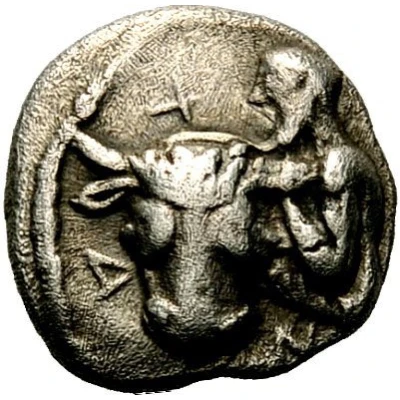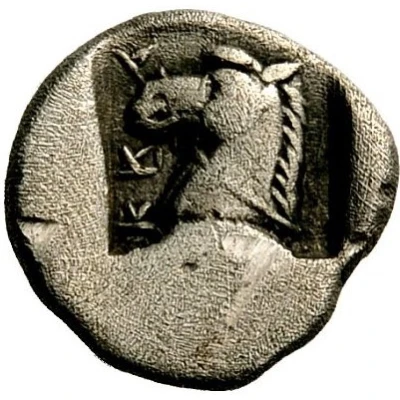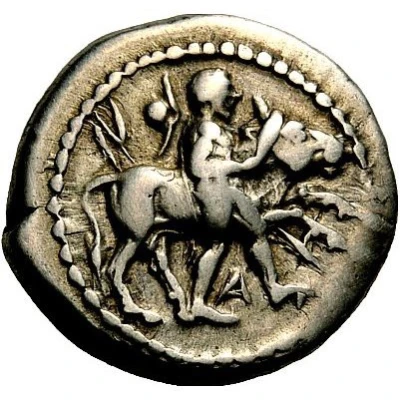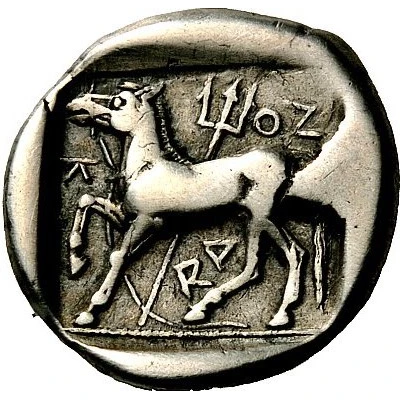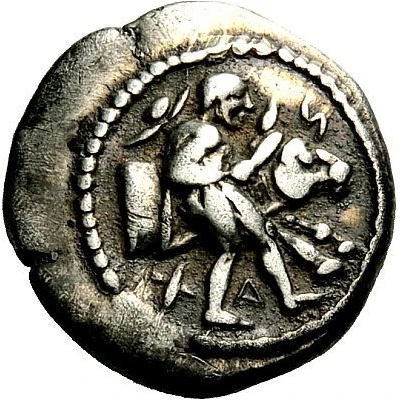
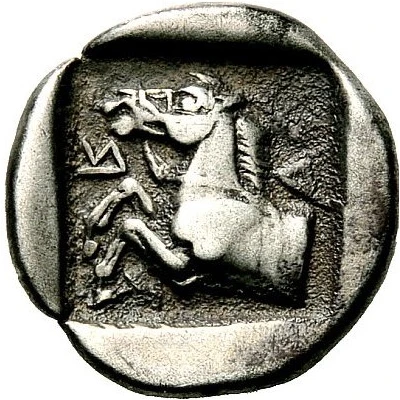

© Nomos AG
Hemidrachm 460 BC - 400 BC
| Silver | 2.93 g | - |
| Issuer | Krannon (Thessaly) |
|---|---|
| Type | Standard circulation coin |
| Years | 460 BC - 400 BC |
| Value | Hemidrachm (½) |
| Currency | Drachm |
| Composition | Silver |
| Weight | 2.93 g |
| Shape | Round (irregular) |
| Technique | Hammered, Incuse |
| Demonetized | Yes |
| Updated | 2024-10-10 |
| Numista | N#170774 |
|---|---|
| Rarity index | 100% |
Reverse
Forepart of bridled horse to left and behind it a trident. All within incuse square
Script: Greek
Lettering: Κ P Α
Comment
Moustaka 36.
Interesting fact
The Hemidrachm coin from Krannon (Thessaly) was used as a form of currency in ancient Greece during the 5th century BC. Its name "Hemidrachm" means "half drachma" and it was valued at half the weight of a standard drachma coin. Despite its relatively small value, the Hemidrachm was widely used in trade and commerce, and many examples have been found in archaeological excavations throughout the region. It's interesting to note that the Hemidrachm coin was made of silver, which was a valuable and widely accepted metal at the time. The coin's design featured an image of the mythical creature, the Griffin, on one side and an inscription on the other. The Griffin was a symbol of protection and strength, and its image was often used on coins to signify the power and wealth of the issuing city-state. Overall, the Hemidrachm coin is a fascinating piece of history that provides insight into the economic and cultural practices of ancient Greece.
